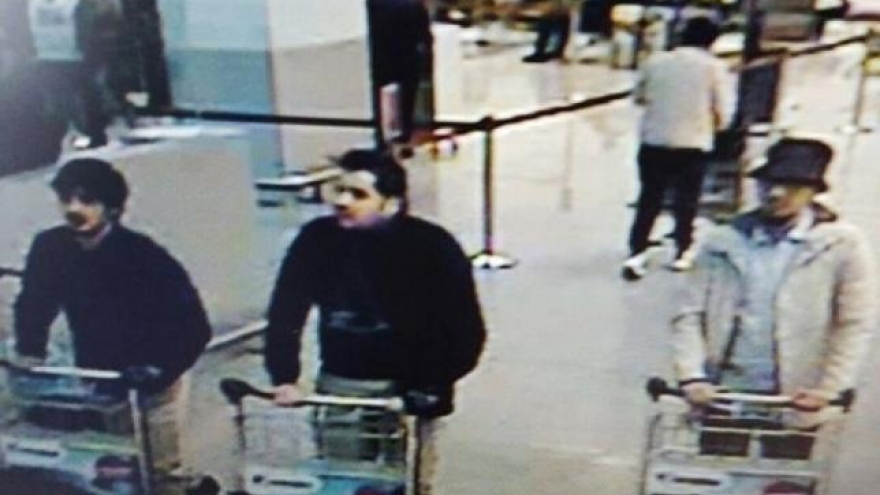Brussels Airport reopens to thin stream of passengers
Brussels Airport reopened to a thin stream of passengers on April 3, 12 days after suicide bombers destroyed its departure hall and killed 16 people.
Belgium's main airport says it aims to return to maximum capacity before the start of summer holidays at the end of June or early July.
The airport had not handled passenger flights since two suspected Islamist militants carried out the suicide attacks. Those bombs and a separate one on a metro train in the capital killed 32 people, excluding the three bombers.
On April 3, the airport handled just three flights, the first bound for Faro in Portugal with only about 80 passengers.
The plane bore a surrealist design of clouds and birds in homage to Belgian painter Rene Magritte and had only been unveiled the day before the bombings. It taxied toward the runway flanked by an honor guard of staff and, after a minute's silence, took off.
Flights were also scheduled to Turin and Athens later in the day, with three return flights set for the evening.
 |
The first passengers for nearly two weeks fed into a vast temporary marquee housing security controls and check-in facilities.
Arnaud Feist, the airport's chief executive, described April 3's reopening as a sign of hope and an emotional moment for all airport staff.
"We've worked day and night, literally day and night, over the last 12 days to make this moment possible," he said.
On April 4, the airport will serve a wider range of destinations, including one plane due out to New York and two more to cities in Cameroon, Gambia and Senegal.
Many flights have been re-routed to Belgium's regional airports or other nearby hubs such as Amsterdam and Paris, with high-speed trains to and from Brussels packed.
Brussels Airport has warned passengers to arrive three hours before their flights due to the increased security and to come by car. The normal train and bus services are not running.
Special cameras will be set up to read number plates, there will be random checks of vehicles and the drop-off zone will not be accessible.
Passengers and their baggage will be checked on arrival and there will be increased patrols of armed police and military.
The airport, which provides work for some 20,000 people, is among the busiest in Europe, handling 23.5 million passengers per year. It links the Belgian capital, headquarters city of the European Union and NATO, with 226 destinations worldwide, through 77 airlines.



